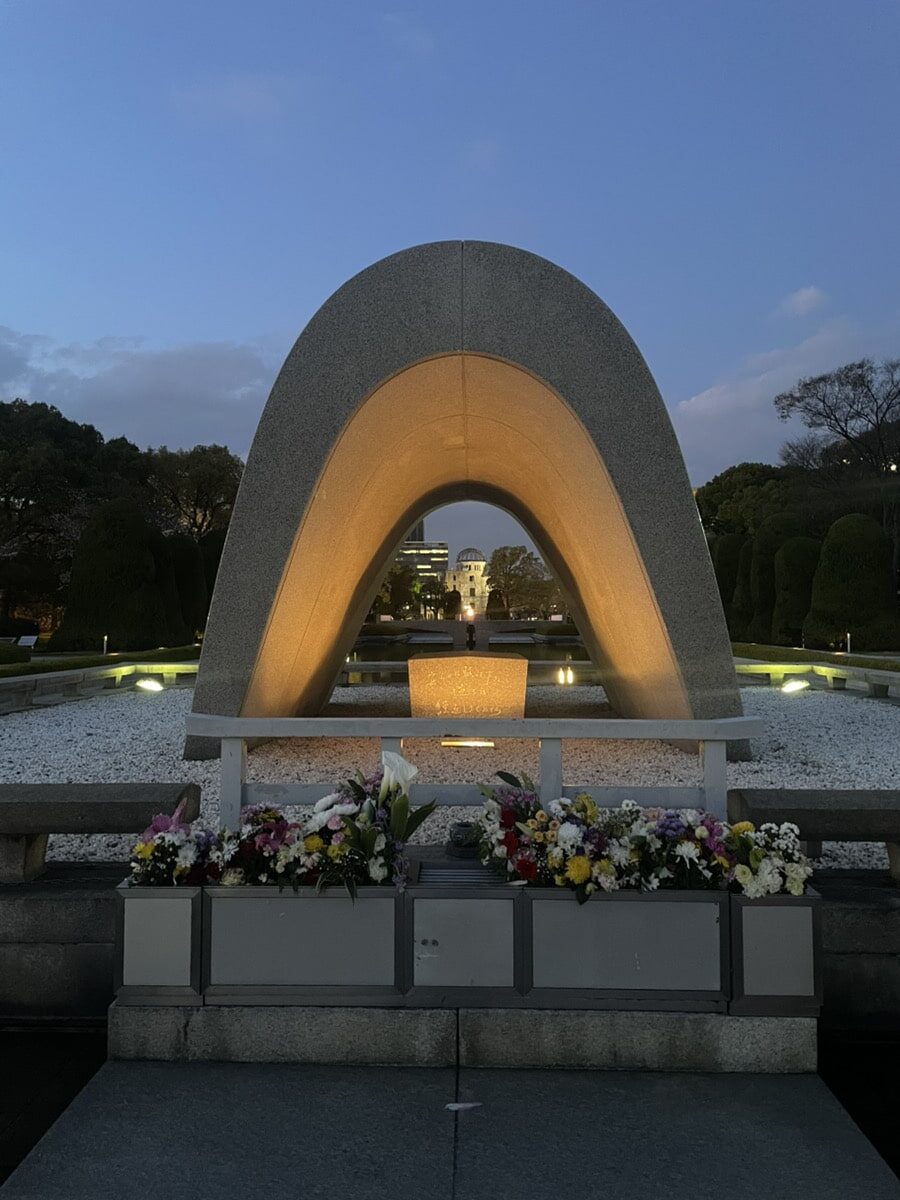
Hiroshima was told that no flowers or plant life would grow for 70 years after it was bombed.
Some links on this page are affiliate links. We may earn a commission if you make a purchase, at no additional cost to you.
Imagine that— 70 long years of ash and sand in a burnt, barren wasteland.
If you’ve never visited Hiroshima, Japan, I encourage you to cross it off your bucket list sooner rather than later; as a human being, as a citizen of the world, Hiroshima’s heartbreaking history is a part of our story— yours and mine, no matter where you’re from.
Walking the streets of Hiroshima, you’ll encounter clean, tidy roads, the historic Hiroden city tram, delicious okonomiyaki, the hollow hull of the Atomic Dome – as well as multicolored flowers and lush trees thriving where no one thought they would grow again.
Trip Planning Tips
Airfare deals – find your best deal.
Lodging deals – from capsules to luxury stays.
Guided Tours – customized or pre-made.
Travel Insurance – just in case.
SIMs/eSIMS – data or voice, text, & data. 25% off long-term voice, text, and data
If it’s your first time, you’ll want a comprehensive guide on what to eat, what sights to see, and how to get around. So let’s dive right into 7 must-visit spots, food recommendations, and more.
If you want a personally designed guided tour, we suggest GoWithGuide.
3 Must-See Hiroshima Spots
If your time in Hiroshima is limited, definitely go to these three places:
- The Atomic Bomb Dome
- Peace Memorial Park & Museum
- Miyajima
They’re doable in 2 days; you’ll want to spend one full day on the dome and museum, which are located close together. Itsukushima Shrine on Miyajima Island is a train + ferry ride away, and is worth spending at least half a day on the island. Let’s take a look at some details:
1. Atomic Bomb Dome
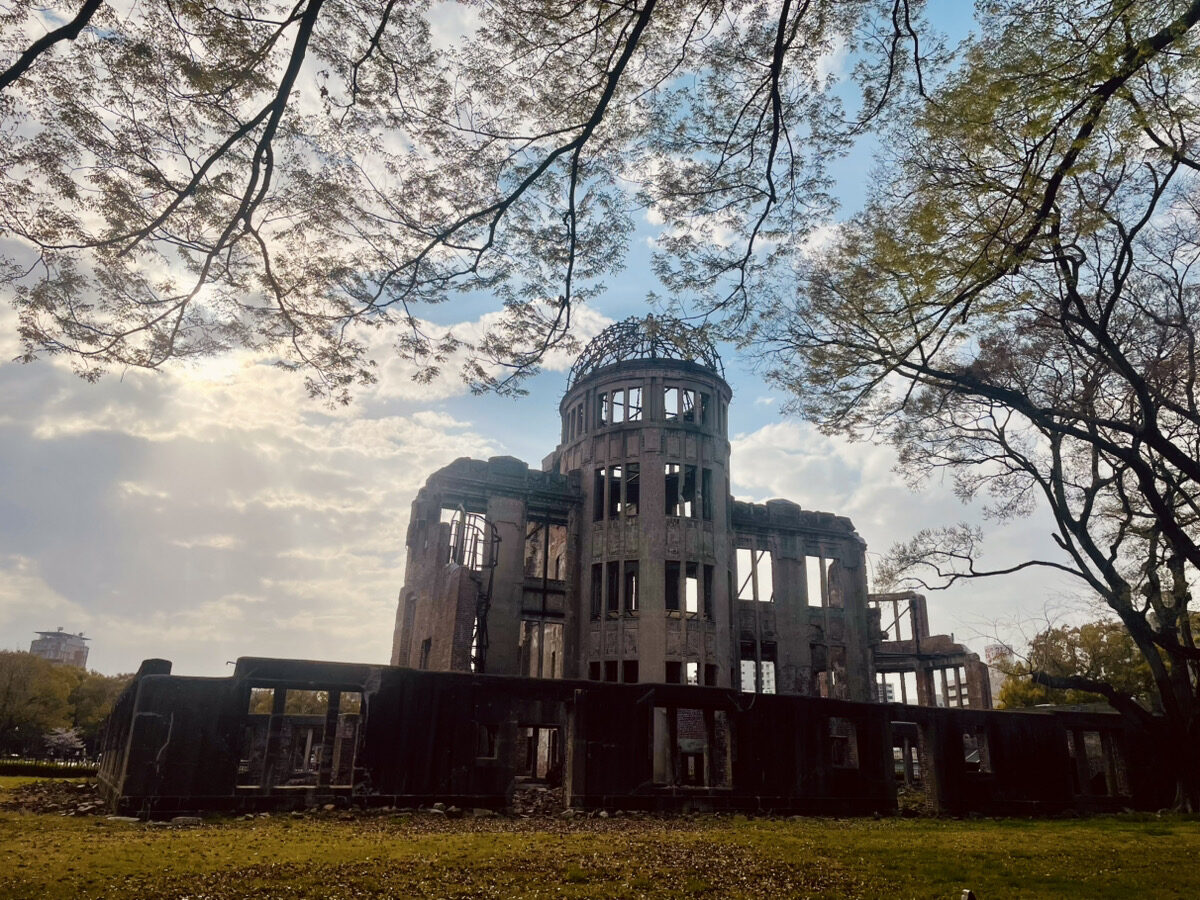
The only building preserved in the ruined state right after the bombing, the Atomic Bomb Dome, also called Genbaku Dome, was once Hiroshima’s Prefectural Industrial Promotion Hall and was at the epicenter of the blast.
Originally, it was left because the steel and concrete structure would take too many resources to deconstruct post-war, but now it stands through the effort of the people to preserve it. These ruins serve as a sobering reminder of the destructive power of nuclear warfare and as a symbol of peace and resilience.
Genbaku Dome is a short walk away from the Peace Memorial Park and is well worth a visit. Standing in front of it invoked a sense of powerlessness coexisting with a feeling of hope — a strange combination that’s hard to describe with words.
Admission Fee: Free
Access: 20 Minutes by Hiroden from Hiroshima Station
Be sure to ride the city tram, or Hiroshima Dentetsu (Hiroden) for short. It conveniently stops right in front of the dome, and this beloved city tram is a miracle and a piece of history in and of itself.
Despite the death and destruction that rained down upon the city, the Hiroden’s surviving train cars were up and running within 3 days of the bombing and went on to be used for 75 years after.
2. Hiroshima Peace Memorial Park & Peace Memorial Museum
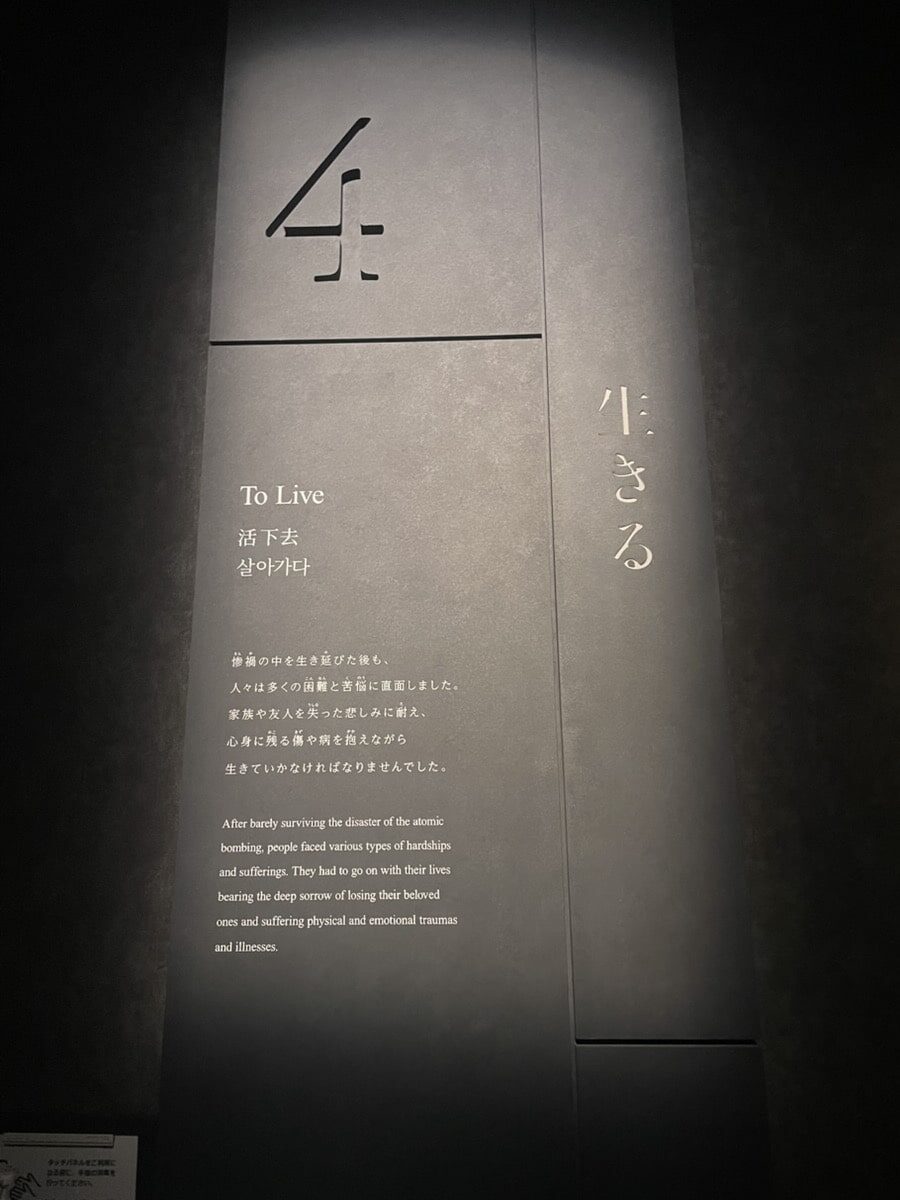
Just a short walk away from the dome is the Peace Memorial Park, and within it, the Museum. No trip to Hiroshima is complete without visiting these two places.
Located at the epicenter of the atomic bomb explosion in 1945, this solemn and beautiful park is dedicated to the memory of the victims and the hope for a world without nuclear weapons.
There are numerous monuments nearby and within the park, such as the bell dedicated as the Children’s Peace Monument, the Cenotaph dedicated to victims of war with an eternal flame, as well as the Gates of Peace, a series of gates with the word “peace” inscribed over and over in 49 languages.
The eternal flame, officially called the Flame of Peace, was lit in 1964 and has been burning ceaselessly for 61 years since. And it will continue to burn until the day nuclear weapons disappear from the world.
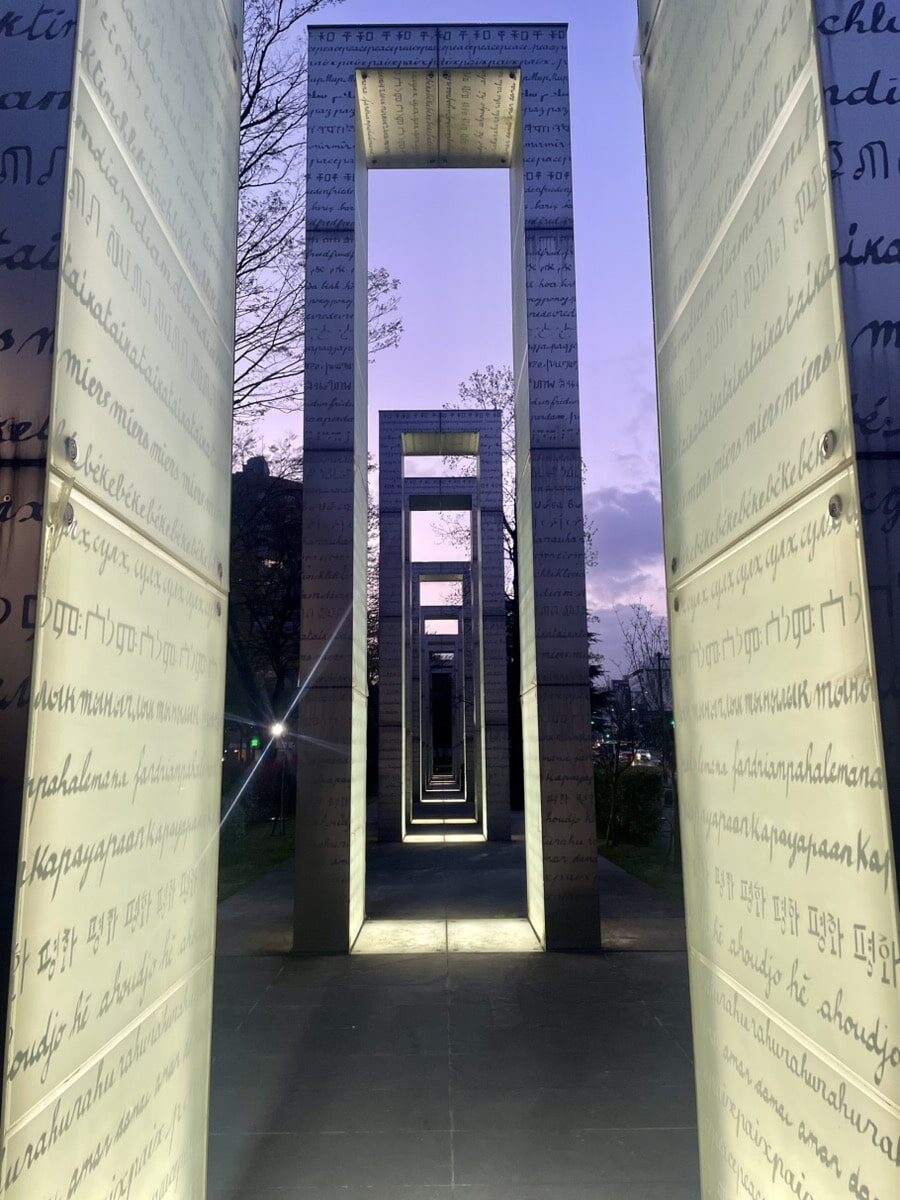
As you move further in the park, you’ll find The Hiroshima Peace Memorial Museum. Housed in an unassuming building, this museum offers powerful exhibits, personal stories, and historical artifacts donated by survivors of the atomic bomb.
It’s a somber and educational experience quite unlike the glitz and glamor you might find being a tourist in the rest of Japan, but absolutely a must-visit. Some places aren’t meant to be admired, but to be witnessed.
It is our moral duty as global citizens, as living beings on planet Earth, to see the destruction of our past so that it may never infringe on our future.
Tip: Allow at least 2–3 hours, if not half a day, for a thorough visit and bring tissues—it can be an emotional experience.
Admission Fee: 200 yen for the museum
Access: a short walk away from Genbaku Dome
3. Itsukushima Shrine
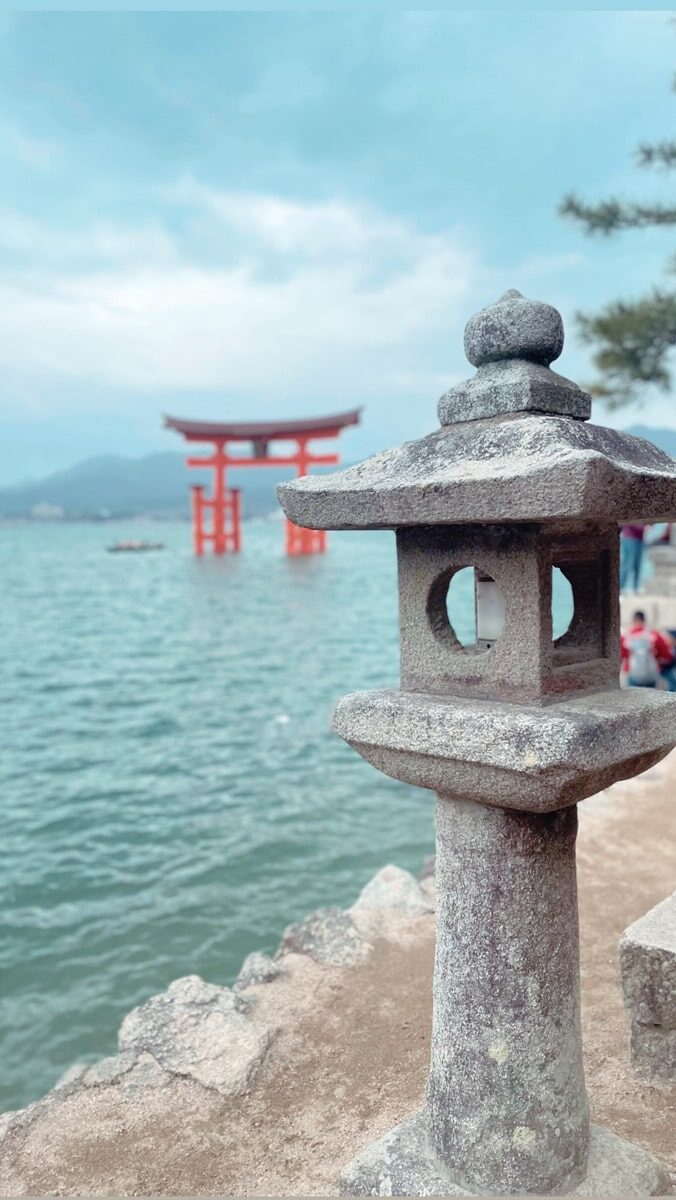
About an hour away by train from Peace Memorial Park is the ferry terminal that’ll take you to Miyajima, home to one of the most iconic visuals of Japan— Itsukushima Shrine.
The famous floating torii gates of Itsukushima Shrine are striking when viewed from both the ferry and from the island itself. As one of Japan’s most visited and most photographed sites, the gates appear to be floating above water at high tide, but can be walked to at low tide. Be sure to check their website for the tide schedule on the day you’re visiting.
The shrine itself has been destroyed in fires, earthquakes, and tsunamis, but has been rebuilt beautifully. Note that the island offers more than just the Shinto Shrine— there are numerous street food and souvenir shops, friendly deer that roam around, hiking trails, and other temples you can visit. You can easily spend a whole day on this island.
*Though the deer are friendly and will try to steal or beg you for food, you are technically not supposed to touch or pet them as they’re said to be messengers of the gods.
Also check out: Proper Etiquette for Temples and Shrines
Entrance Fee: 300 yen for Itsukushima Shrine
Access: Miyajima can be reached by a 10-minute ferry from JR Miyajima Ferry Station, which is about one hour outside the city.
Two ferry companies can take you across; there’s no difference in price, only the times they run, so feel free to take either.
Side Note:
If you have more than 2 days in Hiroshima, check out these two spots as a bonus.
- Orizuru Tower
Located right next to the Peace Memorial Park, Orizuru Tower offers a modern experience with a rooftop observation deck that provides panoramic views of Hiroshima. Visitors can also fold paper cranes (a symbol of peace) and drop them into a glass wall installation. The interactive exhibits and cafe make it a lighter and more pleasant stop after the heaviness of the museum.
- Shukkeien Garden
Meaning “shrunken-scenery garden,” Shukkeien is a serene oasis nestled in the heart of the city. Designed in 1620, the Japanese garden features a central pond, elegant bridges, miniature landscapes, and a relaxing teahouse connected to the art museum.
It’s a lovely spot to slow down and reflect, and is especially beautiful and photogenic during cherry blossom or autumn foliage seasons. You can also rent kimonos nearby for photo opportunities.
Local Delicacies: What to Eat and Where to Find Them
Enough about the tourist sites— now onto the food. Here are some famous dishes and desserts local to Hiroshima. The most famous of them is, of course, Okonomiyaki.
1. Okonomiyaki
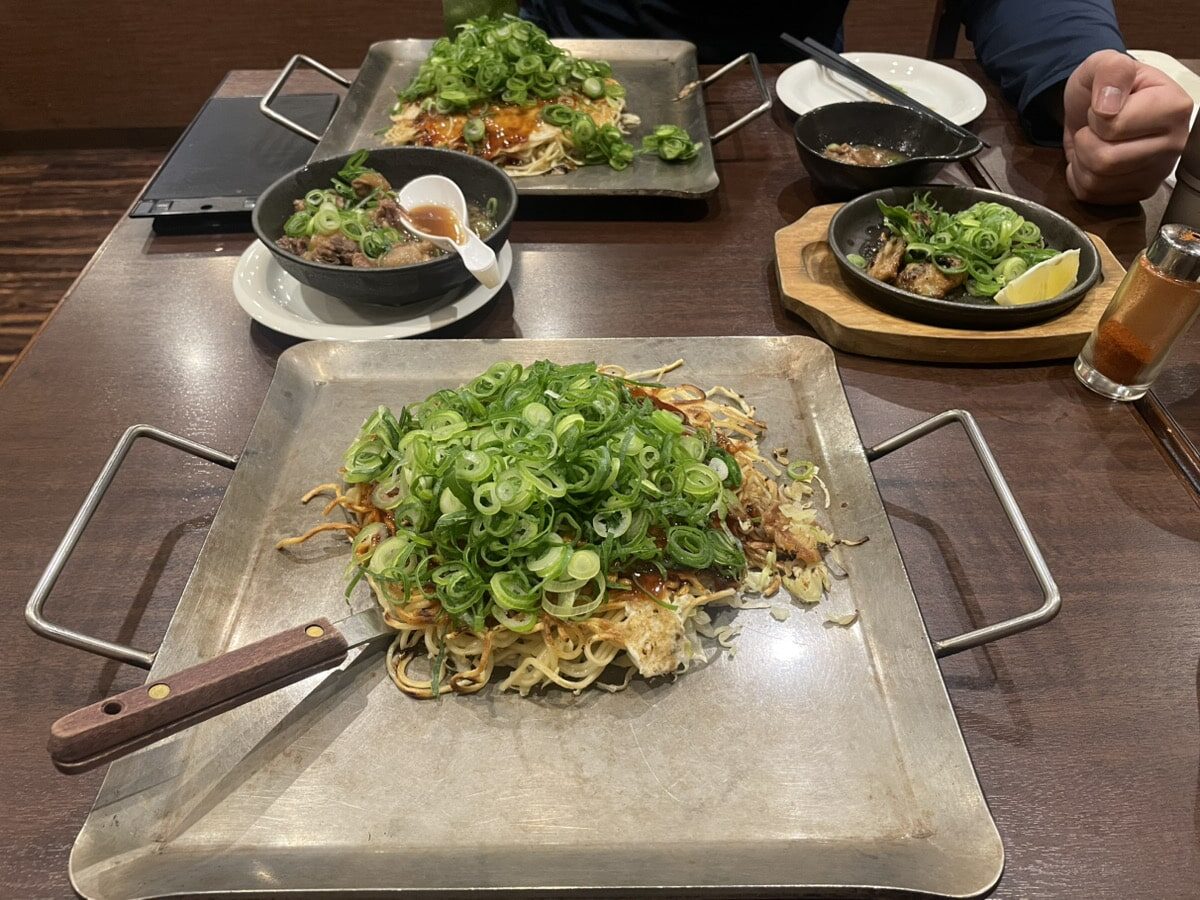
Okonomiyaki is a savory pancake filled with cabbage, noodles, and pork fried on a metal grill in front of you, and topped with seaweed flakes, mayonnaise, and sauce.
Though okonomiyaki can be found throughout Japan, especially around Osaka, some would argue that Hiroshima was the original. Either way, the significance of this dish goes beyond the taste and is deeply intertwined with history.
Procuring food during the war was hard enough without half the city and its food source being scorched to dust. After the war, the US army rationed out flour as aid, which was watered down and grilled on metal plates as pancakes.
First, filling and cheap veggies (cabbage) were added. Then, as the restoration after the war progressed, layers with “luxuries” such as eggs, pork slices, and noodles were added for it to become the dish it is today.
In this way, okonomiyaki directly reflected the growth of the economy and is symbolic as the soul food of Hiroshima, having been born from the rubble of war.
While visiting, be sure to try it— you can find it anywhere in the city, but some famous restaurants are listed below:
- Nagata-ya
- Micchan
- Okonomimura: a building with a collection of casual stall-like okonomiyaki restaurants you can pop by quickly
2. Oysters
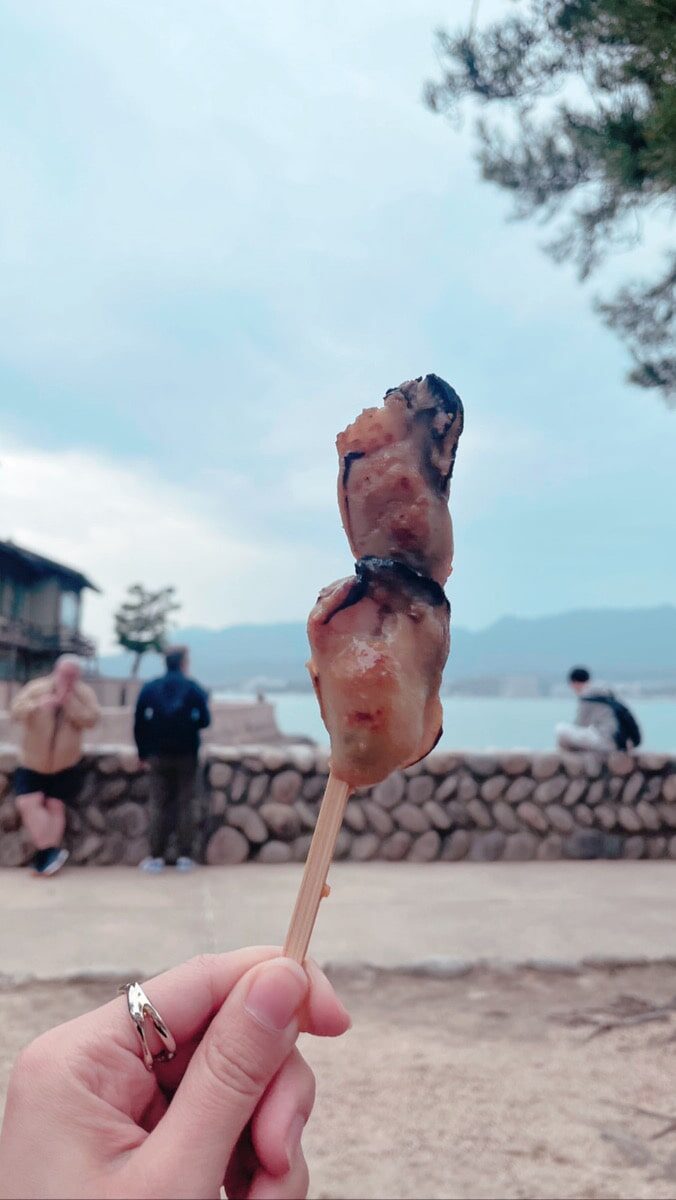
Hiroshima is the region that produces the most oysters in all of Japan; you can find fresh raw oysters when in season, and cooked year-round. Whether you like them steamed, grilled, or skewered— you can find a million and one ways to enjoy these briny delicacies in Hiroshima.
Where to buy: Try a Kakigoya, or a little oyster hut for fresh oysters, or get them grilled or skewered at souvenir stores on Miyajima, or go into the city if you’re looking for a more upscale restaurant.
3. Momiji Manju

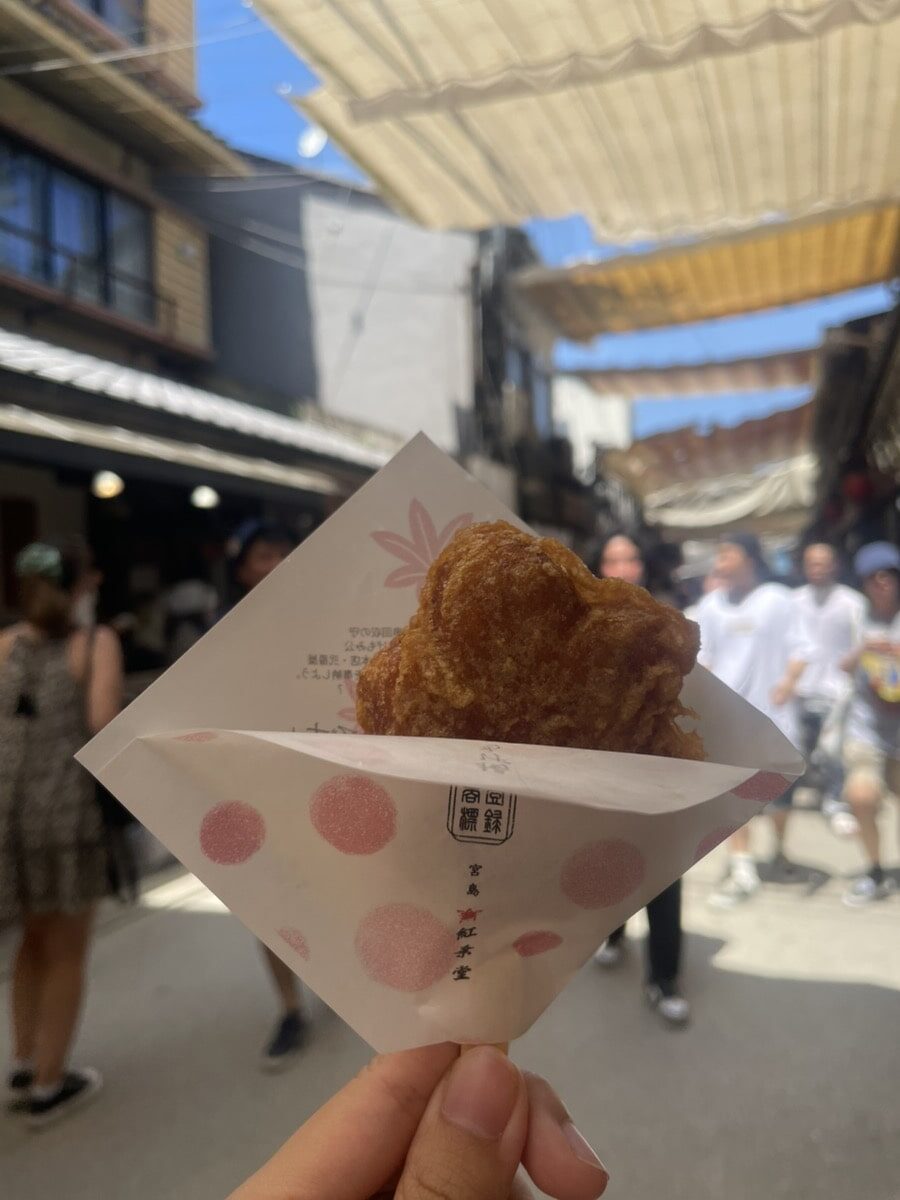
Originally from Miyajima Island, momiji manju are a symbol of the region and make for elegant, tasty souvenirs.
These soft, maple leaf-shaped pastries are cakes filled with red bean paste, custard cream, chocolate, matcha cream…there’s a variety of flavors you can choose from.
Momiji manju come neatly boxed, individually packaged, and are easy to carry home to share with your friends and family.
While on Miyajima, you can try these snacks fresh! Certain stores sell them crafted into desserts like ice cream sandwiches or deep-fried skewers.
Where to buy: Shops on Miyajima Island, Hiroshima Station, or souvenir stores in the city center.
Fujiiya and Takatsudo are two famous brands that have been around for years, and are both delicious.
Bonus Tips for Visiting Hiroshima
- Transportation: Hiroshima’s public transportation is reliable and easy to use. The Hiroshima Electric Railway (the city tram, Hiroden) is particularly handy for getting around the city. If you’re in the city for a while and will be traveling extensively without a car, consider purchasing the Visit Hiroshima Tourist Pass, which offers unlimited rides on trains, buses, and ferries within specific zones and discounts at some attractions.
- Best Time to Visit: Spring (March–May) and autumn (October–November) offer the most pleasant weather, with cherry blossoms and fall foliage adding an air of extra charm and whimsy to Miyajima Island and the Peace Memorial Park.
- Etiquette and Manners: When visiting memorial sites like the Peace Museum or the Atomic Bomb Dome, make sure you and your children maintain a quiet and respectful demeanor. Before it’s a tourist attraction, it is first and foremost the grounds of one of the biggest humanitarian tragedies the world has seen.
Conclusion
The Hiroshima of today is a vibrant and modern city filled with flowers and trees, delicious okonomiyaki, friendly locals, historic sites, and powerful prayers for peace. Though not as flashy as some bigger cities in Japan, Hiroshima should be a bucket list item for absolutely everyone– to observe both the horrors of our past and the resilience, the goodness of human nature.
To visit Hiroshima is not just to enjoy delicious food and beautiful scenery; it’s to shoulder the weight of history, if only for a moment.
And until the day the Flame of Peace goes out in finality and nuclear weapons disappear from the face of the earth, Hiroshima is a chapter of our shared history that we must bear witness to without averting our eyes.
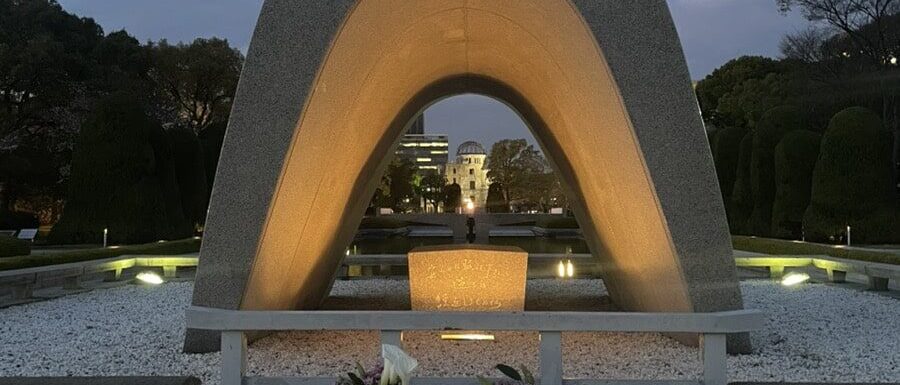
Leave a Reply